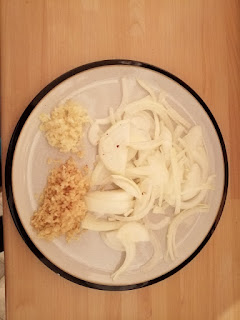 |
| The Filipino flag Source: https://publicdomainvectors.org/en/free-clipart/Philippines-Flag/18868.html |
There is a quote about Mexico attributed to its former president, Porfirio Diaz, which is "¡Pobre México! ¡Tan lejos de Dios y tan cerca de los Estados Unidos!" which means "Poor Mexico! So far from God and so close to the United States!" Obviously, the country of Mexico is literally nextdoor to the United States, geographically and it is something of the bitch to the US, providing cheap labour and a destination for cheap healthcare but also lending them some great genuine cuisine from the New World (and probably providing a lot of drugs for them too). The country isn't the only one that has been culturally overwhelmed by the USA. Another more geographically remote and recent addition to this list is the Philippines.
 |
| The Philippines So many islands Source: https://www.gov.uk/foreign-travel-advice/philippines |
The Philippines is a huge archipelago of 7641 beautiful tropical islands in the South China Sea. It's an interesting country in that it's the only Christian country in Asia, thanks to being a former Spanish colony (to be fair, pretty much every country in the region, with the exception of Thailand, was colonised by Christian European powers, but retained their culture and religion largely intact. However, no-on expects the Spanish Inquisition). It came under the influence of the US after it became a prize in a war between Spain and the US and, later, as a place from which the Americans would launch attacks on Japan in WWII. It's also a very poor country, which is why Filipino nurses staff hospitals the world over, Filippino sailors man ships traversing the world and Filipino bands play in bars across SE Asia. The other reason for this is because English is so widely spoken (again, relating to the American influence). As much as I dislike sweeping generalisations and at the risk of being patronisingly colonial, the Filipino people are actually lovely: friendly, fun and happy, like those of many other countries in the region. Sweeping generlisations are seldom universally correct, and this is true of the Filipino people. As well as being ruled as a colony, they've had more than their fair share of in-house despots, such as Ferdinand Marcos and current populist "hard man" Rodrigo Duterte. Both Filipino, both tossers, along with their cronies who have enabled them to gain and retain power.
 |
| The Terminator has let itself go Roberto Duterte, Self-styled hardman and wannabe dictator president of the Philippines |
As far as we ignorant Westerners are concerned, Filipino food is probably noteworthy for three dishes: balut, pagpag and adobo. Balut is a steamed, fertilised duck egg, so basically a boiled egg with little-biddy chick inside it. Pagpag is the shit McDonalds and KFC, or any food outlet, throw out after its best before date, reheated and served to the poor; and then there's adobo, a rich stew that is unctuous and comforting, giving lie to this idea that the Philippines don't have any decent food (which makes them the Britain of Asia in that respect, because our food is laregly crap, but we have our moments).
Adobo is a pretty simple dish, without any fancy spices or obscure ingredients. However, it's got a lot of the elements that are common in Thai, Chinese and other cuisines with simultaneously being sour, sweet, salty and umami
TIMING
Preparation: 10-15 minutes plus marination
Cooking: 3½ hours
INGREDIENTS
4tbsp dark soy sauce
6 cloves garlic, crushed
3 tbsp white wine vinegar
1tsp whole black peppercorns
5 bay leaves
250-300g belly pork, cut into bite-sized chunks
1 medium onion, sliced
1 medium sweet potato, peeled and cut into 2cm chunks
2 tsp sugar
½ tsp ground white pepper
RECIPE
Put the soy, vinegar, garlic, black peppercorns and bay leaves into a dish and add the pork, tossing to ensure it's well covered.
 |
| Marinating away |
Cover and marinate in the fridge for at least a couple of hours, or, ideally, overnight.
Heat the oil in a heavy pan and, using a slotted spoon, remove the pork from the marinade and fry for a few minutes until browned, about 10 minutes.
Remove the pork from the pan using the same slotted spoon
Add the onions to the pan and gently fry the onion until soft, about 5-10 minutes.
Add the sweet potato and cook for a further five minutes
Return the pork, pour in the remaining marinade to the pan plus 150 ml water, the sugar and white pepper and bring to the boil
 |
| In the pot |
Pour into the slow cooker dish, cover and set to medium for 3-4 hours. Alternatively, you can do this on the hob for an hour or two
Serve up with plain boiled or steamed rice
 |
| A bowlful of satisfying, meaty, Filipino goodness |
NOTES
You could add some chilli, as either a pinch of dried chilli flakes and a chopped fresh chilli if you want add a bit of a kick to this.
Belly pork is nice and moist, thanks to the large amount of fat it contains. You could use pork tender loin instead which is leaner and takes less cooking, so you can reduce the cooking time. The dish would also work with chicken, in which case I'd suggest skinless, bone-in thighs which have a bit more flavour than breast fillet. Beef would also work.
Sweet potato works quite well, though if cooked too long can go quite soft. Like many of these slow-cooked stews, root vegetables stand up to long cooking, so carrots work well, regular potatoes would also be good. Otherwise, that old standby of squash or something like celeriac perhaps would work.
As I mentioned above, I have visited Manila. As much as the American influence in the Philippines is all permeating, but they have found some great ways to subvert it. Take, for example, the Jeepney. A surplus of WWII Jeeps were taken and converted into small buses which have been a vital form of public transportever since. They are usually colourfully decorated, and as individual as their drivers. They are the Philippines' answer to Thailand's tuktuks or India's bicycle rickshaws. Given the horrendous traffic in Manila (the 2nd worst in the world), there is no better way to experience heavy air pollution than in the back of a pimped out former wartime military vehicle.
 |
| Jeepneys Source: http://www.positivelyfilipino.com/magazine/riding-a-filipino-jeepney-101 |
When I was visiting Manila, we were sat in a bar enjoying a beer, and there were hawkers coming round to sell all sorts of things such as pork scratchings (awesome), other snacks, eggs, live snakes and knock-off viagra. How could I tell it was counterfeit Viagra? It wasn't hard.
 |
| Source: https://giphy.com/gifs/drum-tsss-badum-kPIswn0RfPTGxOvDj5 |
I mention that the Philippines is the only predominantly Christian country in Asia, but they have their very own style of Catholicism, analagous to the Thaipusam festival celebrated in the Hindu faith, where, on Good Friday every year, some people are so taken in their religious ecstasy that they actually have themselves crucified. Personally I prefer the Easter Bunny as a way to celebrate Easter. Anyway, this is my in for the obliquely relevant music video that has become a feature of this blog. Get a load of this slice if camp 90s Europop from Swedes Army of Lovers which was written about this practice in The Philippines.
I'm crucified
Army of Lovers
I'm obviously doing a major disservice to the country. With a huge number of islands, covering huge metropololises of Manila, Quezon and Davao to relatively unspoilt jungle and untold kilometres of coastline populated by a huge variety of indiginous peoples, there is a rich and diverse culinary culture to be explored, so if anyone wants to fund me a trip to go over and discover this, all donations will be gratefully received. You can guarantee the resulting TV series would be more entertaining and a damnsight funnier than anything that Rick Stein has come up with, but you might not want to watch it with your Mum.
















